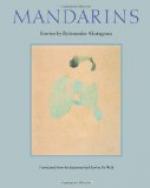|
This section contains 5,798 words (approx. 20 pages at 300 words per page) |

|
SOURCE: “From Tale to Short Story: Akutagawa's Toshishun and It's Chinese Origins,” in Reality and Fiction in Modern Japanese Literature, M. E. Sharpe Inc., 1980, pp. 39–54.
In the following essay, Lippit argues that Akutagawa's use of traditional existing stories allows him to shift his focus away from the problems of modern storytelling and instead deal more directly with the story elements themselves.
Following in the path of Mori Ogai and Natsume Sōseki, writers whom he especially admired, Akutagawa Ryūnosuke (1892–1927) started his writing by rejecting the confessional self-revelation and open self-search which characterized Japan's I-novelists, including the naturalistic writers like Katai and the idealistic Shirakaba writers. Akutagawa, who was also strongly influenced by Western fin-de-siècle literature, chose the short story as his form from the start, and studied Poe, Anatole France, de Maupassant, Gautier, and Merimée, among others.
Although the short story has been the dominant...
|
This section contains 5,798 words (approx. 20 pages at 300 words per page) |

|


